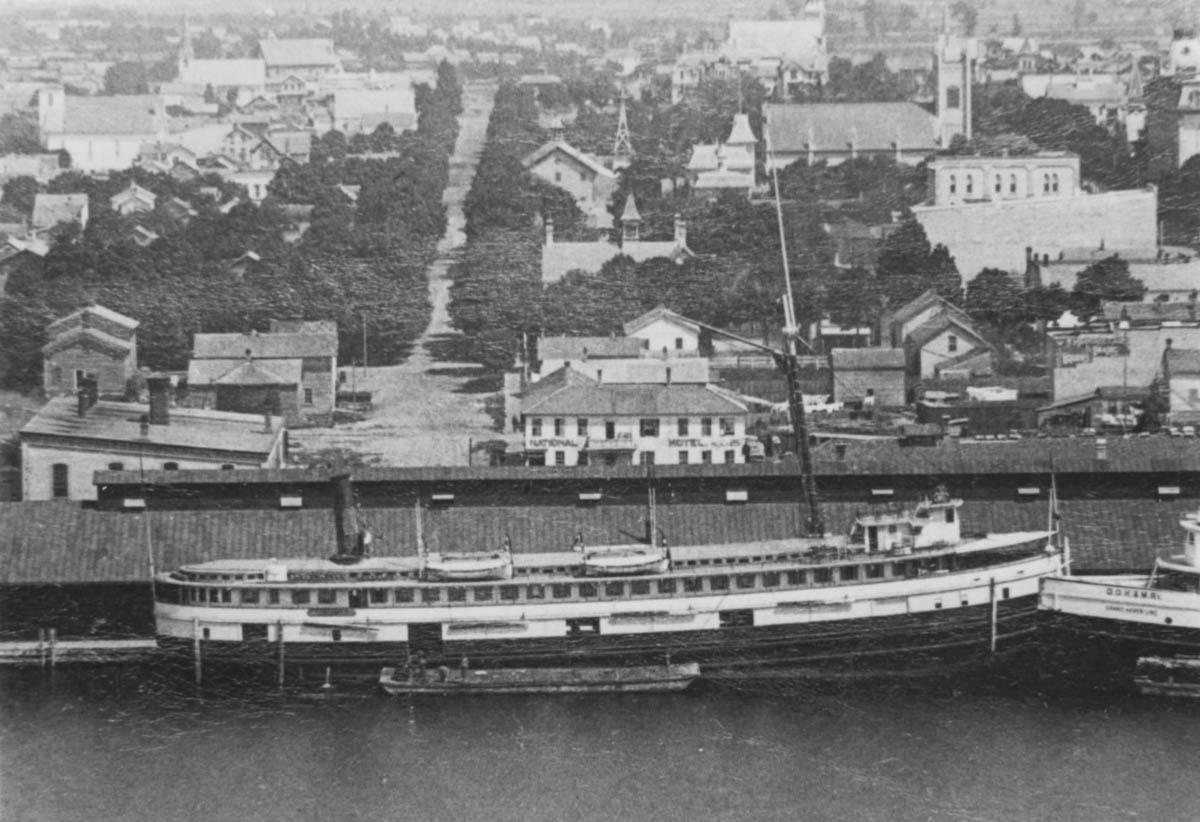The SS Michigan was a passenger steamship that carried passengers across the Great Lakes. When she was built, she was one of the most advanced steamships on the Great Lakes. She provided luxurious accommodations for customers, including heated cabins, ornate woodwork, and oil paintings to decorate the rooms. The Milwaukee Railway Company later purchased her. The Michigan became entrapped in an ice pack in February 1885, sinking in Lake Michigan a few weeks later.
The Detroit Dry Dock Company built the vessel in Wyandotte, Michigan, with an iron double hull separated by three feet (0.91 m). In addition to the double hull, five watertight compartments were added for extra safety. 123 cabins were built and were said to be the most luxurious on the lakes, complete with velvet carpets, furniture, and oil paintings. Her engine was a F & AC compound, with 27-inch (69 cm) and 44-inch (110 cm) cylinders and a stroke of 40 inches (100 cm). The engine was accompanied by an 8-foot-diameter (2.4 m) boiler built by De Soto & Hutton of Detroit, which was 18 feet long (5.5 m).
In the early months of 1885, a harsh winter had hampered Lake Michigan shipping. The Great Lakes shipping trade usually comes to a halt during the winter months, but an early thaw in February prompted it to resume. However, as soon as ships left port with cargo, a powerful winter storm swept through the region, dumping three feet (0.91 m) of snow in two days. This caused many ships to become trapped in ice, including two Milwaukee Railway Company ships, one of which was the Michigan’s sister ship, the Wisconsin. Knowing that the ships and their cargo would be doomed if left to the ice pack, the Milwaukee Railway Company decided to use the Michigan and her double hull to break through.
On the morning of February 9, 1885, the Michigan and 29 crew members assembled to see if they could free the ships. That same day, a nor’easter gale blew the ship off course and into an ever-expanding ice pack. By the morning of February 11, she was trapped in ice and drifting southward. By February 17, conditions remained unchanged, and the crew was rapidly depleting resources. The captain ordered that the sailors ration supplies and enlisted a 17-man team to cross the frozen lake to land, as the ship’s condition deteriorated. Using ice picks, axes, and ropes, the group travelled 12 miles (19 kilometres) to reach the shore in Allegan County, Michigan. On February 21, a supply ship arrived to restock the Michigan.

In 2005, the Michigan Shipwreck Research Associates discovered the wreck of the Michigan in 270 feet (82 meters) of water off Holland, Michigan. The discovery was made while MSRA members were scanning the lake bottom with David Trotter of Canton, Michigan, who was also involved in the 2001 discovery of the H.C. Akeley near Saugatuck. She is lying upright on the lake bottom, her cabin structure collapsed as a result of her violent impact with the lake floor while sinking.






